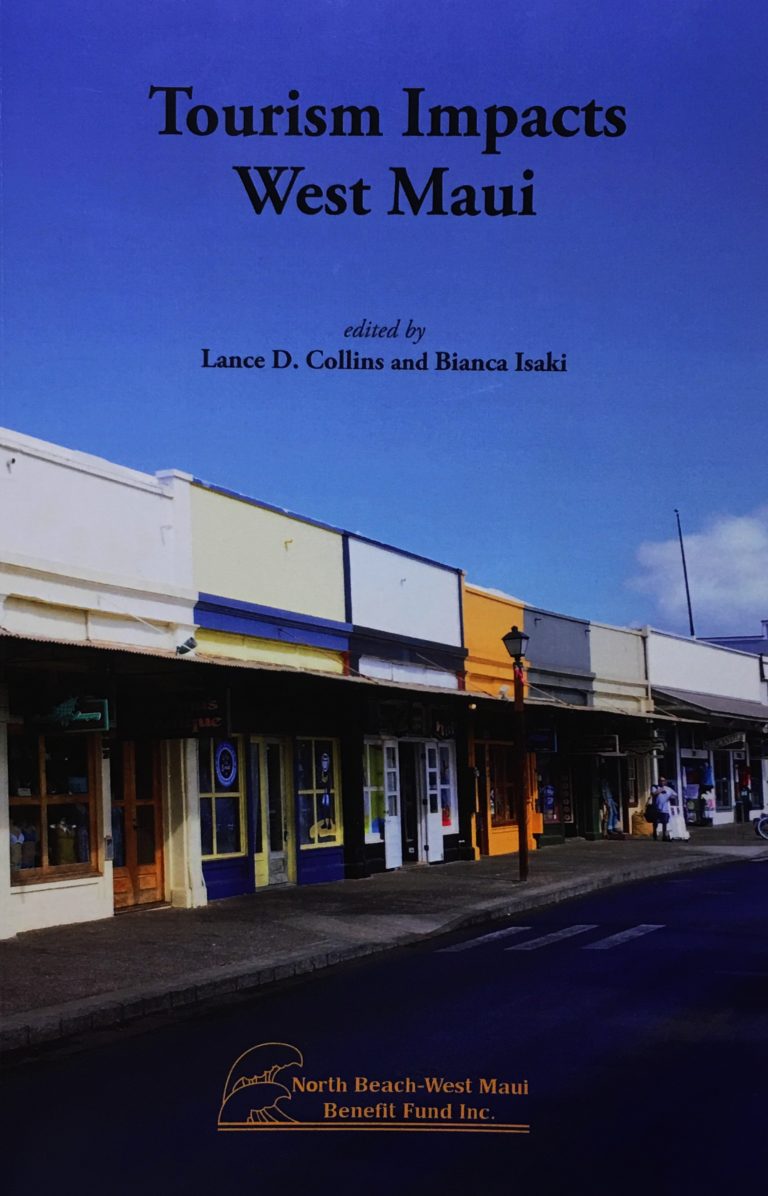
New book offers discerning perspectives
of Lahaina's many histories and communities
The Lahaina News
January 26, 2017
BY SUMMER KUPAU-ODO, Lahaina News
LAHAINA - When I tell people I come from Lahaina, I am always prepared to defend her to locals throughout Hawaii who know only of the Ka'anapali and Kapalua resorts or the infamous Front Street. Lahaina is not just a "little Waikiki," I say. She is home to so many plantation descendants who have moved away, to Kanaka Maoli who know of her spiritual and political significance, and of course to those who live there still.
But now, having lived in Honolulu for almost as long as I was raised in Lahaina, the weight of my words diminishes. If Lahaina is not just a tourist destination, why did I leave? And why have I not returned?
The chapters in the new book "Tourism Impacts West Maui" insightfully, and with not a little sense of lament, capture both the reasons many raised in Lahaina leave Lahaina, and the reasons we continue to care so deeply about her future.
"Tourism Impacts West Maui," edited by Lance D. Collins and Bianca Isaki, explores the ways tourism changed West Maui and how changes brought to the region made a tourist economy viable
 |
| "Tourism Impacts West Maui," edited by Lance D. Collins and Bianca Isaki, explores the ways tourism changed West Maui and how changes brought to the region made a tourist economy viable |
As Bianca Isaki observes, post-plantation workers' fears that "[t]ourism holds no future for many of the workers' relatively more highly educated children" may have been realized in Lahaina, but "we see a longer Hawaiian history and the plantation community-era converging on shared concerns with the continuation of place-based resources, perhaps not for the children who have moved away, but for those who stay."
As Charles Devaney discovered in his attempt to map the trails of West Maui, access to mauka (upland) resources are scarce, dependent on the unilateral wishes of large, private landowners. So he calls for "a balance between local politics, the tourism industry, local demographics and the ecosystem."
That balance is a recurring theme in these chapters, and in his intriguing take on the Lahaina Bypass, beginning with the legend of Eleio, Brian Richardson also examines the critical importance of understanding "the stakeholders and the power relations at play," a topic too easily overlooked when it comes to planning for Lahaina - and indeed places throughout Hawaii.
Lilia Santiago, Marie Marfil and Abraham Flores' chapter documenting the stories of Ilocano hotel workers offers the uplifting side of the tourist industry - how members of an immigrant group more recently woven into Lahaina's cultural fabric have managed to find personal fulfillment.
For Kanaka Maoli, Lance Collins, Sydney Iaukea and Jonathan Dial's chapters capture the physical and symbolic dispossession and misappropriation of Maoli lands and culture, by questioning the status of the crown lands at Wahikuli, the desecration of the wahi pana (sacred place) Moku'ula, and the origins of "Halloween in Lahaina." These controversial conversations are imperative but rarely get the attention they deserve in the planning processes.
A well-known 'olelo no'eau (Hawaiian saying), "I ka wa ma mua, ka wa ma hope" - literally, the future is in the past - teaches that any plans for the future must be guided by the wisdom of the past. The chapters of this book, written by scholars who offer discerning, and in some cases never-before-articulated, perspectives of Lahaina's many histories and communities, all begin from this premise - as they should.
Whether you have lived in Lahaina all your life, were raised here and moved away, or are simply visiting, this book will transform your understanding of this special place. And if you are one with kuleana (responsibility) to chart Lahaina's future, this book is a must-read. For to plan Lahaina's future responsibly, you must honor the truths of her past.
"Tourism Impacts West Maui" is available at the University of Hawaii Press website (www.uhpress.hawaii.edu/) and other online and in-store booksellers.
North Beach West Maui Benefit Fund, Inc.
P O BOX 11329
LAHAINA, Hawaii 96761